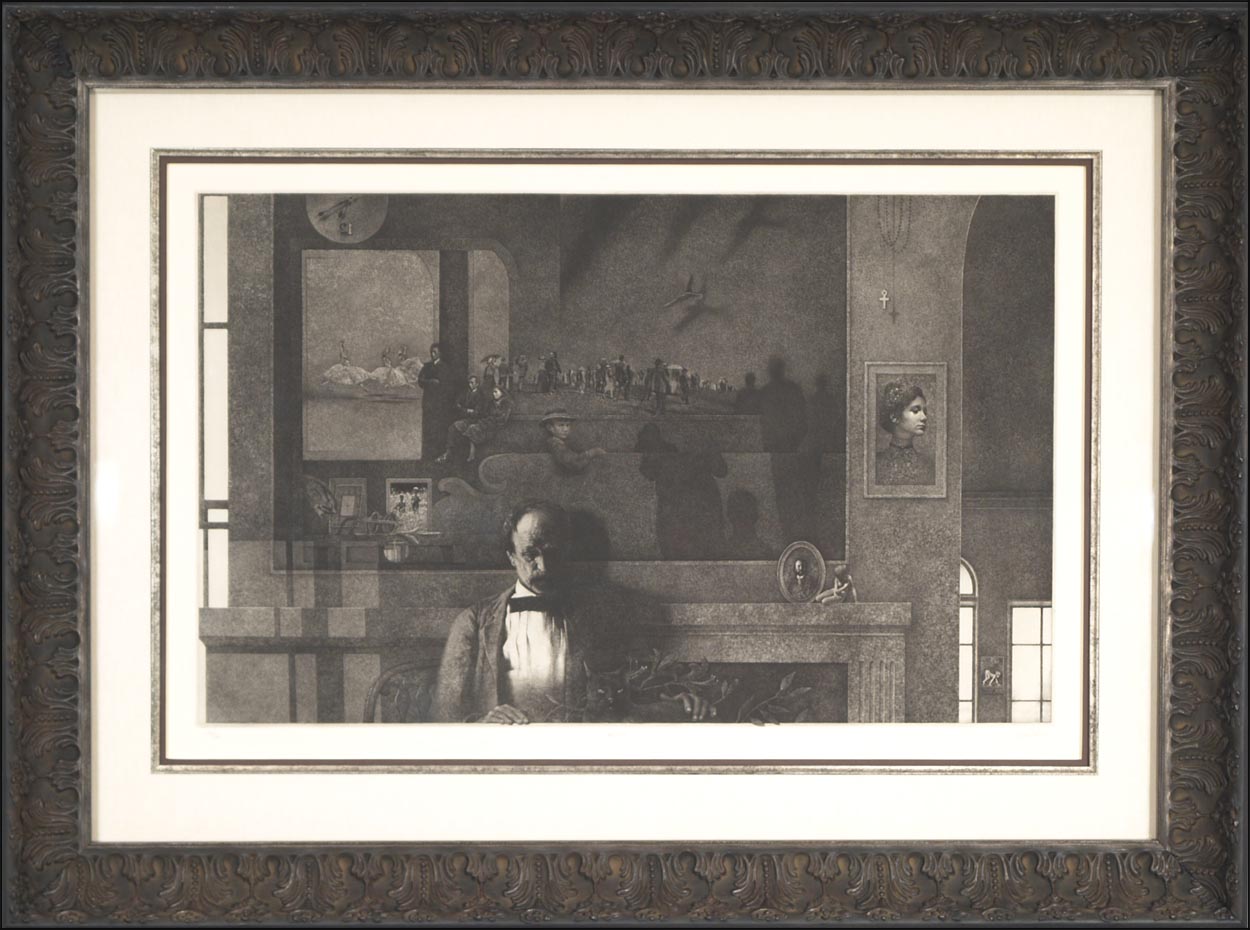|
|
 |
|||||||||||||
|
Click On The Title To View A Larger Image |
|||||||||||||
 |
|||||||||||||
|
(1975) |
|||||||||||||
|
"Daylilies" 1975, photosensitive resist-ground etching and engraving on Rives heavyweight buff paper, 20" x 32"; 502x813mm, full margins. Signed, dated, numbered and titled in pencil, lower margin. Published by Impressions Workshop, with the blindstamp, lower left. A very good impression [Milton 96]. Peter Milton (1930- ) was born in Pennsylvania, educated at Yale School of Art and since the 1960s specialized in the graphic arts establishing himself as a master of etching and engraving. In the 1970s and 1980s Milton began producing large etchings in which his earlier landscape concentration was superseded by complex compositions linking figures with elements of architecture. "Daylilies" established Peter Milton as a major artist in etching focusing on the experiences of childhood, maturity and with the processes of memory through pictorial narrative. For "Daylilies", Milton at first turned to photographs from the 1920s and 1930s by the Hungarian photographer Andre Kertesz, evoking a European cultural past using variable pictorial planes as a metaphor for memory. Milton states, "what brought the drawing to life for me was that it now incorporated a variety of planes - both literal and pictorial planes and metaphorical temporal ones in which events are happening in time as well as space. These planes could be made to refer to one to another, even to conduct a sort of dialogue. In my own work, the only images that interest me are those where the fact of surface, the illusion of space, and the poignancy of time coexist, intersect, and are of equal importance". "Daylilies" is a 20th century masterpiece whose imagery contains a narrative spanning five centuries. The central figure of the boy, turning as if startled by the photographer Kertesz or Kertesz's shadows on the wall, all become secondary to a man, cat and a few daylilies creating a metaphorical landscape. Milton added images of his own children, a reference to Durer's Melancholia, an image of an afflicted child on all fours, a woman's image taken from an advertisement in the New York Times and photo-imagery of Thomas Eakins. Milton says, "perhaps this sort of running commentary - a linear sequence of events - suggest that a piece like "Daylilies" is a narrative. I should emphasize that though the record of how an image progresses does not constitute a sort of story, the image itself is narrative only in a different sense. Unlike music and literature that must move through time, art can be instantaneous. And one could say that a truly successful visual work provides something of an instant epiphany, where all its paramount information is experienced simultaneously - in a moment seemingly outside time. It is analogous to that instant of startled satisfaction one feels looking at computer-derived 3-D imagery when random patterns on a flat surface suddenly snap into place as a fully articulated spatial field. Though I suppose what I am really working toward is a four-dimensional articulation - where images juggle with the time continuum as part of the enigma". "Daylilies" is in a black with silver undertones Roma leaf pattern coved 33 5/8" x 45 3/8" frame. The Larson-Juhl "Bolshoi" smooth silver wood fillet echoes the frame. The outer white linen and forest floor loam over 8-ply rag inner mats are acid and lignin free and protected with Acrylite-AR OP3 (UV) by CYRO ....... $10,000.00 (wire-transfer only) |